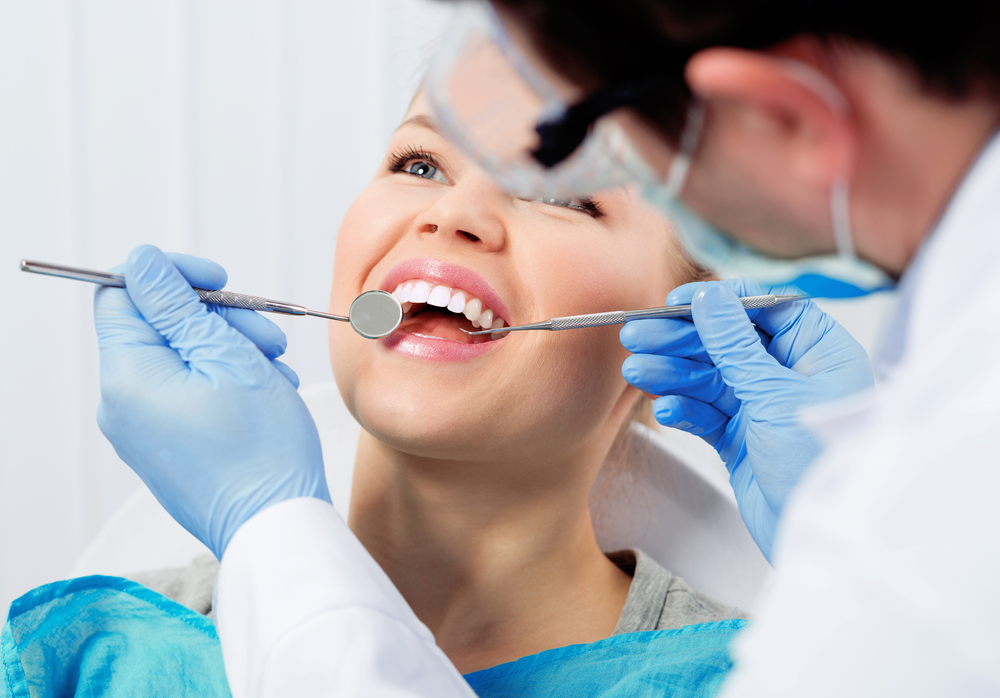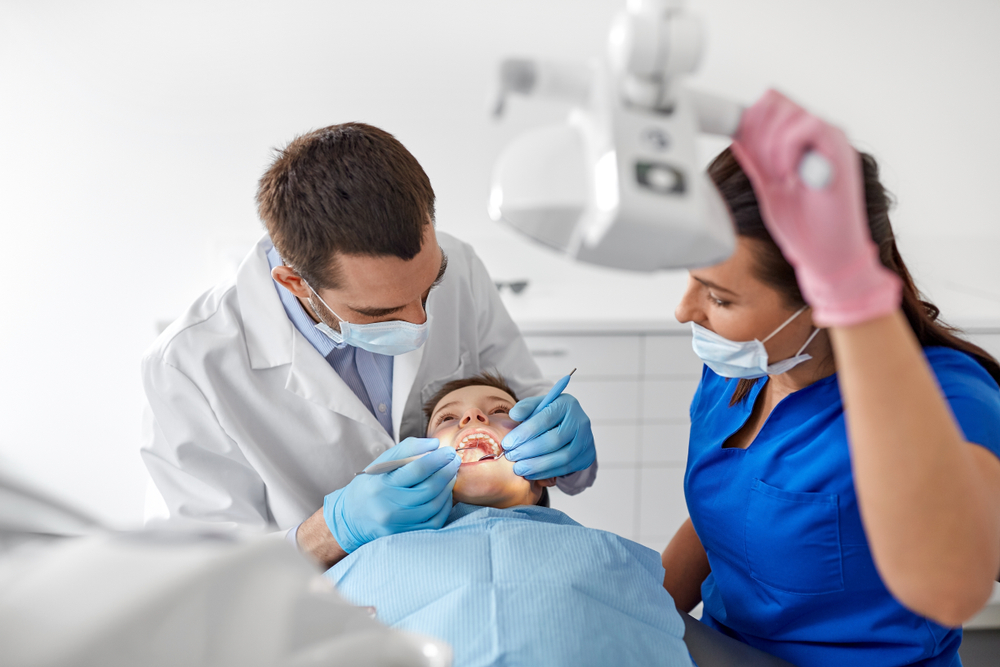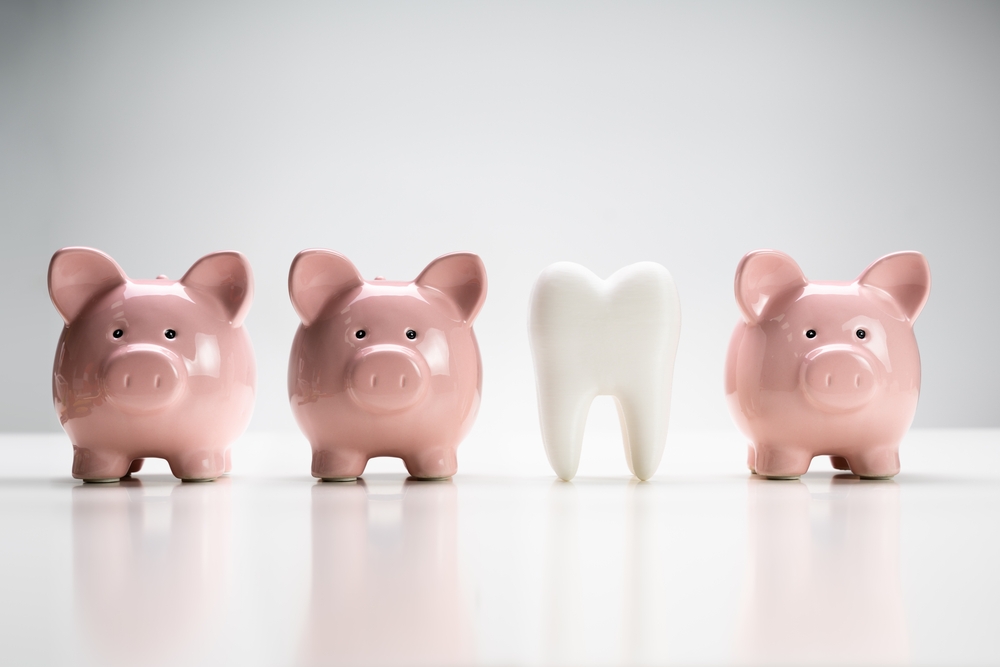1812 E. Broadway St.
Pearland, TX 77581
Please contact us at (281)993-9900 to confirm service availability and schedule your dental care consultation.
When tooth decay or trauma exposes the delicate inner pulp of your tooth, time becomes critical. At Pearland Dental Group, Dr. Rushi Dave and Dr. Mili Shah explain pulp capping—an innovative dental treatment that can save your natural tooth when the pulp is exposed but hasn’t yet developed a serious infection. Pulp capping is often used to treat a tooth before it becomes an infected tooth, helping to avoid more invasive procedures like root canal therapy.
This conservative approach is a significant advancement in modern dentistry, offering patients throughout Pearland, Pasadena, Fresno, and Alvin a chance to preserve their natural teeth while avoiding more extensive procedures. Contact our experienced Pearland, TX, dental professionals at (281)993-9900 to discover if pulp capping is right for your situation.
At Pearland Dental Group, Dr. Rushi Dave and Dr. Mili Shah combine years of specialized dental training with a commitment to conservative endodontic care, ensuring optimal outcomes and patient comfort.
Our practice is equipped with state-of-the-art technology—including digital radiography and advanced magnification systems—for precise diagnoses and effective treatments. We believe in treating the whole patient, taking time to understand your unique needs, and developing personalized plans that fit your lifestyle and budget.
We prioritize tooth preservation and transparent communication, ensuring you fully understand your options and care requirements. Conveniently located to serve Pearland, Pasadena, Fresno, and Alvin, we offer flexible scheduling—including emergency dental appointments—to fit your busy life. Our focus on long-term relationships means you’ll receive ongoing preventive care and support for lasting oral health.
Pulp capping is a specialized endodontic technique where our dental professionals carefully place a pulp capping agent directly onto exposed or nearly exposed tooth pulp. This procedure is performed in cases of pulpal exposure due to decay or trauma, creating a protective barrier that encourages the tooth’s natural healing mechanisms while preventing bacterial invasion and subsequent infection.
The pulp—containing nerves, blood vessels, and connective tissues—is housed within the pulp chamber and serves as your tooth’s life support system. When this vital tissue becomes exposed through decay, fracture, or deep dental work, resulting in pulpal exposure, pulp capping can often restore the tooth’s health and maintain pulp vitality without requiring complete pulp removal.
Pulp capping allows patients to maintain their original tooth structure, avoiding the need for artificial replacements. This preservation maintains natural chewing function and prevents adjacent teeth from shifting. By keeping your natural tooth intact, you retain the original proprioceptive feedback—the sensory mechanism that helps you gauge bite force and food texture.
Natural teeth also maintain their unique root structure, which provides superior bone stimulation compared to artificial replacements, helping preserve jawbone density over time. Additionally, preserving the natural tooth eliminates the need for complex restorative procedures like dental implants or bridges, which require modification of adjacent healthy teeth.
Unlike traditional root canal therapy, pulp capping requires minimal tissue removal, preserving more of your natural tooth structure. This conservative method reduces treatment time and post-procedural discomfort. The procedure typically removes only 1-2mm of tooth structure compared to the extensive hollowing required for root canal therapy, which can weaken the tooth significantly.
By maintaining more of the original tooth architecture, pulp capping preserves the tooth’s natural strength and flexibility, reducing the risk of future fractures. The minimal intervention also means less trauma to surrounding tissues, resulting in reduced inflammation and faster healing times.
Patients typically experience significantly shorter healing periods compared to root canal treatments. Most individuals return to normal activities within 24-48 hours, with minimal dietary restrictions. This rapid recovery occurs because pulp capping preserves the tooth’s natural blood supply and nerve function, allowing the body’s healing mechanisms to work efficiently.
Unlike root canal therapy, which requires extensive healing of the tooth’s internal structure, pulp capping focuses on protecting and supporting the existing healthy tissue. Patients often report minimal to no post-treatment pain, avoiding the need for prescription pain medications that may be necessary after more invasive procedures.
The less invasive nature of pulp capping dramatically decreases the likelihood of post-treatment complications, including infection, prolonged sensitivity, or structural weakness. Because the procedure maintains the tooth’s natural defense systems and blood circulation, the risk of secondary infection is significantly lower than with procedures that remove living tissue. The preservation of natural tooth structure also eliminates complications associated with root canal therapy, such as missed canals, instrument separation, or perforation.
Pulp capping procedures generally cost substantially less than root canal therapy followed by dental crown placement, making it an attractive option for budget-conscious patients seeking quality care. The initial cost savings can be substantial, typically 40-60 percent less than comprehensive root canal treatment with crown restoration. Long-term economic advantages include reduced need for future treatments, as successfully treated teeth often require only routine maintenance rather than complex restorative work.
Patients also save on indirect costs such as multiple appointments, time off work, and potential complications that might require additional treatment. Dental insurance companies often view pulp capping favorably due to its conservative nature, frequently providing better coverage compared to more extensive procedures.
When performed on appropriate candidates, pulp capping demonstrates excellent long-term success rates, often lasting decades with proper oral hygiene maintenance. The longevity of pulp capping treatments stems from the preservation of the tooth’s natural healing capacity and continued vitality. Successfully treated teeth maintain their ability to respond to stimuli and continue forming protective dentin throughout the patient’s lifetime.
Continued dentin formation is a key indicator of successful long-term pulp capping outcomes, as it reflects ongoing reparative processes and the maintenance of pulp vitality. This ongoing biological activity helps the tooth adapt to changing conditions and resist future damage, often eliminating the need for retreatment that may be required with other endodontic procedures.
Ideal candidates for pulp capping include patients with:
Both vital pulp exposure and carious exposure are considered here, depending on the cause. Time is absolutely critical for pulp capping success because the pulp tissue begins to deteriorate rapidly once exposed to oral bacteria.
Within the first 24-48 hours, the pulp maintains its vitality and healing capacity, making it most responsive to therapeutic intervention. After this window, bacterial contamination typically becomes too extensive, significantly reducing the procedure’s success rate and necessitating more invasive treatments like root canal therapy.
The size of the pulp exposure directly correlates with treatment success rates. Small exposures under 2mm allow for more predictable healing because there’s minimal disruption to the pulp’s blood supply and nerve network. Larger exposures create greater surface area for bacterial invasion and often indicate more extensive underlying damage that may require complete pulp removal rather than preservation.
Spontaneous pain—discomfort that occurs without any trigger—typically indicates irreversible pulp inflammation or infection, making pulp capping unsuitable. Similarly, prolonged sensitivity to temperature changes (lasting more than a few seconds) suggests the pulp’s inflammatory response has progressed beyond the point where conservative treatment can be effective. These symptoms indicate the need for more comprehensive endodontic therapy.
Strong, intact tooth structure surrounding the exposure site is essential for long-term success because it provides proper support for the restoration and helps maintain the seal that protects the treated pulp.
The presence of a carious lesion may affect candidacy for pulp capping, as compromised tooth structure or extensive decay can lead to restoration failure, bacterial leakage, and treatment breakdown. Additionally, healthy tooth structure indicates that the decay process hasn’t extensively weakened the tooth’s foundation.
Patients with excellent oral hygiene are ideal candidates because they’re more likely to maintain the bacterial control necessary for successful healing. Poor oral hygiene increases the risk of bacterial contamination around the treatment site, which can lead to treatment failure and the development of secondary decay. Good hygiene habits also indicate patient compliance with post-treatment care instructions.
Any evidence of pulp death (necrosis) or active infection, such as abscess formation, persistent throbbing pain, or radiographic evidence of periapical pathology, makes pulp capping contraindicated. These conditions indicate that the pulp tissue has already been irreversibly damaged and cannot regenerate properly. In such cases, complete pulp removal through root canal therapy becomes necessary to eliminate the source of infection.
Direct pulp capping addresses situations where the pulp has been directly exposed, typically through mechanical exposure during cavity preparation or traumatic injury.
Step-by-Step Process:
Indirect pulp capping treats teeth where the pulp hasn’t been directly exposed but lies very close to the cavity floor, with only a thin layer of affected dentin remaining.
Detailed Treatment Steps:
Traditional yet effective, calcium hydroxide creates an alkaline environment that promotes dentin bridge formation while providing antimicrobial properties. However, calcium hydroxide is known for its high solubility, which can affect its long-term sealing ability. Modern formulations offer improved handling characteristics and more predictable outcomes.
Considered the gold standard in pulp capping materials, MTA provides superior sealing properties, excellent biocompatibility, and promotes robust dentin regeneration. Mineral trioxide aggregate is primarily composed of Portland cement, which contributes to its sealing and biocompatibility properties. Its setting properties remain stable in the presence of blood and moisture.
Advanced materials like Biodentine and TheraCal offer rapid setting times, superior handling properties, and enhanced bioactivity. These next-generation cements are also valued for their high biocompatibility, which supports favorable tissue responses. These materials closely mimic natural dentin properties while providing antimicrobial benefits.
These innovative materials combine the benefits of MTA with improved working characteristics, offering dentists greater precision during placement while maintaining excellent biological properties. Additionally, calcium silicate-based materials often exhibit antibacterial properties, which contribute to their effectiveness in pulp capping by helping to combat oral bacteria and promote pulp healing.
Pulp capping procedures are performed under local anesthesia, ensuring you experience no discomfort during treatment. Post-treatment sensitivity is typically minimal and easily managed with over-the-counter pain relievers. Most patients report significantly less discomfort compared to root canal procedures.
We recommend avoiding food and beverages for the first hour post-treatment while anesthesia wears off. Afterward, stick to soft foods for 24-48 hours, avoiding extremely hot, cold, hard, or sticky foods that might disturb the treatment site. A normal diet can typically be resumed within two to three days.
Direct pulp capping procedures usually require 45-75 minutes, while indirect pulp capping initial appointments take 60-90 minutes. The variation depends on the complexity of your case, the number of teeth treated, and individual healing factors.
Most dental insurance plans cover pulp capping when deemed medically necessary. Coverage typically ranges from 50-80 percent of the procedure cost. Our administrative team will verify your benefits and provide detailed cost estimates before beginning treatment.
When performed on appropriate candidates, pulp capping demonstrates success rates of 80-95 percent over five to ten years. Success depends on factors including the timing of treatment, the extent of pulp exposure, patient age, and post-treatment care compliance.
Normal healing includes a gradual reduction of sensitivity over two to four weeks. Warning signs requiring immediate attention include severe pain, swelling, prolonged sensitivity to temperature, or discharge around the treated tooth. We schedule follow-up appointments to monitor your healing progress.
Yes, pulp capping is often an excellent treatment option for children, particularly for primary teeth and young permanent teeth with immature root development. The procedure helps maintain space and function while allowing continued root development.
If pulp capping doesn’t achieve the desired healing response, alternative treatments include traditional root canal therapy or, in some cases, tooth extraction followed by replacement options. We’ll discuss all available alternatives if re-treatment becomes necessary.
Don’t let tooth damage progress to the point where extensive treatment becomes necessary. Pulp capping offers an excellent opportunity to preserve your natural teeth while maintaining optimal oral health and function.
The experienced team at Pearland Dental Group is ready to evaluate your situation and determine if pulp capping can provide the conservative treatment solution you need. Serving patients throughout Pearland, Pasadena, Fresno, and Alvin, we’re committed to helping you maintain your natural smile for years to come. Schedule your dental care consultation in Pearland, TX, today by calling (281)993-9900 and discover how pulp capping can save your tooth and your smile.





Our clinic offers all kinds of services and constantly study new
technology to add new custom services to the list
Phone: (281)993-9900
Address: 1812 E. Broadway St. Pearland, TX 77581
Copyright © 2021 Pearland Dental Group | Managed by Now Media Group